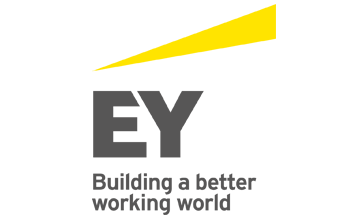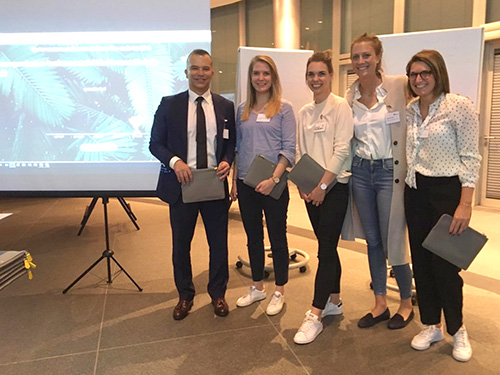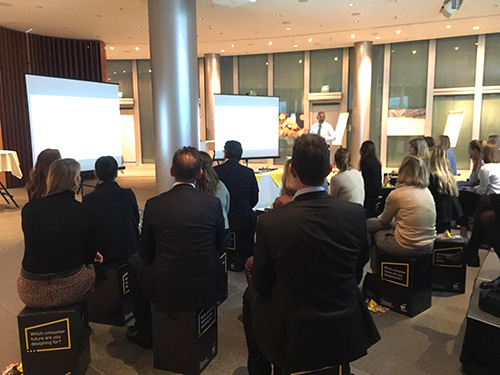LEAD Network Germany Chapter Networking Event
Thursday, 26 September 2019
Place: EY, Graf-Adolf-Platz, Düsseldorf

WHY IS DIVERSITY IMPORTANT IN SHAPING TOMORROW’S CONSUMERS?

![]() The consumer goods and retail industries are undergoing rapid change, driven by new technologies, innovative business models and ever-changing competitors. Consumers are a significant factor in this transformation. Companies must address this change so that they can continue to survive in tomorrow’s consumer world. But how do consumers see the future and what influence do they have on brands, business models and the entire retail and consumer goods sector? How might we live in the future and what will be the products of tomorrow that will make our daily lives easier?
The consumer goods and retail industries are undergoing rapid change, driven by new technologies, innovative business models and ever-changing competitors. Consumers are a significant factor in this transformation. Companies must address this change so that they can continue to survive in tomorrow’s consumer world. But how do consumers see the future and what influence do they have on brands, business models and the entire retail and consumer goods sector? How might we live in the future and what will be the products of tomorrow that will make our daily lives easier?
Participants in the LEAD Network Event of the Germany Chapter on 26 September got to the bottom of these and other questions.
This time, EY hosted the event in Düsseldorf where it introduced the LEAD Network participants to the FutureConsumer.Now (FCN) program. FCN is a global EY campaign that explores the consumer of the future. It asks how people will shop, eat or stay healthy in 10, 20, or 30 years, what sort of technology they will use, how they will spend their free time, work and move around.
Thomas Harms, Head of EY Consumer Products & Retail in Germany, Switzerland and Austria, kicked off the evening event with a brief overview of the global EY program FutureConsumer.Now.
After that, Andreas Waelchli, EY Global Consumer Products Analyst moderated an interactive breakout session, in which the participants developed future business models that serve the needs of the consumers of tomorrow. The discussion was based around the main drivers that will significantly influence our lives in the future, e.g., what influence will modern technologies have, how will artificial intelligence and voice control affect our lives? What will a “4D printing” technology change? Will we be able to use our personal data profiles lucratively in the future, instead of making them available to Facebook, Google and Co. for free?
Based on these drivers, participants from a wide variety of companies formed five groups which each came up with their own personal business model for an innovative product or service of the future.
Each group presented their business model in a short pitch, with the idea “Paul/a” winning over the majority of participants. Paul/a is a robot caregiver devised by the winning group to address the trend of an aging population and ensure that the elderly receive the help and support they need. This business model convinced the audience because it addresses one of the big challenges of our society, the shortage of caregivers, but also because it tackles the problem of isolation of the elderly population by designing the robots to be conversation partners as well.
Other exciting business model ideas were:
- Eat what you want – how modern technology will make a healthy diet easy
- Clothes tailorable to every occasion lightning fast with 4D printing: new materials can change shape and function depending on need – at the push of a button, an evening dress becomes a sports outfit
- EmmaZone: Combines the small corner shop concept (German “Tante-Emma-Laden”) with Amazon and brings it online. In rural areas, it also offers the opportunity to bring Amazon to the population.
At the end of the evening, many of these ideas were discussed further over refreshments. Many participants found it interesting that one thing united all the business models: the challenges of the future can only be solved if we are open to diversity and actively integrate it.
Thank you for this exciting evening!

WARUM BRAUCHT ES DIVERSITÄT, UM DIE ZUKUNFT DES KONSUMENTEN ZU GESTALTEN?
![]() Die Konsumgüter- und Handelsbranche verändert sich in einem rasanten Tempo, getrieben von neuen Technologien, innovativen Geschäftsmodellen und einem sich stetig wandelnden Wettbewerb. Der Konsument hat einen maßgeblichen Einfluss auf den Wandel. Unternehmen müssen sich zwangsläufig diesem Wandel stellen, um in der Konsumwelt von morgen weiterhin bestehen zu können. Doch wie sieht der Konsument der Zukunft aus und welchen Einfluss hat er auf Marken, Geschäftsmodelle und die gesamte Handels- und Konsumgüterbranche? Wie wird er in 10, 20 oder 30 Jahren einkaufen? Was wird er essen, wie für seine Gesundheit vorsorgen und welche Technologien nutzen? Und wie wird er seine Freizeit gestalten, arbeiten oder reisen?
Die Konsumgüter- und Handelsbranche verändert sich in einem rasanten Tempo, getrieben von neuen Technologien, innovativen Geschäftsmodellen und einem sich stetig wandelnden Wettbewerb. Der Konsument hat einen maßgeblichen Einfluss auf den Wandel. Unternehmen müssen sich zwangsläufig diesem Wandel stellen, um in der Konsumwelt von morgen weiterhin bestehen zu können. Doch wie sieht der Konsument der Zukunft aus und welchen Einfluss hat er auf Marken, Geschäftsmodelle und die gesamte Handels- und Konsumgüterbranche? Wie wird er in 10, 20 oder 30 Jahren einkaufen? Was wird er essen, wie für seine Gesundheit vorsorgen und welche Technologien nutzen? Und wie wird er seine Freizeit gestalten, arbeiten oder reisen?
Diese Themen und Fragen standen im Mittelpunkt des LEAD Network Events des Germany Chapters am 26. September 2019, zu dem EY nach Düsseldorf eingeladen hatte.
Thomas Harms, Leiter EY Consumer Products & Retail in Deutschland, Schweiz und Österreich, eröffnete die Abendveranstaltung mit einem kurzen Überblick über das globale EY-Programm „FutureConsumer.Now“, das untersucht, wie der Kunde der Zukunft aussieht.
Andreas Waelchli, EY Global Consumer Products Analyst, moderierte anschließend eine interaktive Breakout-Session, in der die Teilnehmer zukünftige Geschäftsmodelle entwickelten, die die Bedürfnisse der Kunden von morgen optimal bedienen. Grundlage der Diskussion waren zuvor identifizierte wesentliche Treiber, die in Zukunft unser Leben maßgeblich beeinflussen werden, wie z. B. welchen Einfluss werden moderne Technologien haben, wie werden Künstliche Intelligenz oder Sprachsteuerung auf unser Leben wirken? Was wird eine „4D Printing“-Technologie verändern? Werden wir in Zukunft unsere persönlichen Datenprofile gewinnbringend einsetzen können, statt sie Facebook, Google und Co. gratis zur Verfügung zu stellen?
Ausgehend von den vorab identifizierten Treibern entwickelten die Teilnehmer in fünf Gruppen unterschiedliche Geschäftsmodelle für ein neuartiges Produkt oder eine Dienstleistung der Zukunft, die sie anschließend in einem kurzen Pitch vorstellten.
Dabei überzeugte die Idee „Paul/a“ am stärksten. Paul/a greift den Trend der alternden Bevölkerung auf und will sicherstellen, dass auch ältere Menschen durch den Einsatz von Pflegerobotern Hilfe und Unterstützung erhalten. Dabei überzeugte das Geschäftsmodell nicht nur damit, dass es dem Pflegenotstand entgegenwirkt, sondern auch die Vereinsamung der älteren Bevölkerung reflektiert, indem der Roboter auch als Gesprächspartner dient.
Weitere spannende Themen der anderen Geschäftsmodelle waren:
- Essen was man will – wie durch moderne Technologie gesunde Ernährung einfach wird
- Kleidung für jeden Anlass blitzschnell durch 4D Printing anpassbar: neue Materialien können Form und Funktion nach Bedarf ändern – auf Knopfdruck wird aus dem Abendkleid ein Sportdress
- EmmaZone: Verbindet das Tante-Emma-Konzept mit Amazone und bringt den Tante-Emma-Laden ins Netz. So bietet es auch auf dem Land die Möglichkeit, „Amazon“ an die Bevölkerung zu bringen.
Zum Ende des Abends wurden bei erfrischenden Getränken und leichten Snacks viele dieser Ideen weiter diskutiert. Dabei war für viele Teilnehmer interessant, dass alle Geschäftsmodelle eines vereinte: Die Herausforderungen der Zukunft lassen sich nur meistern, wenn man Diversität zulässt und aktiv einbindet.
Vielen Dank für diesen spannenden Abend!






